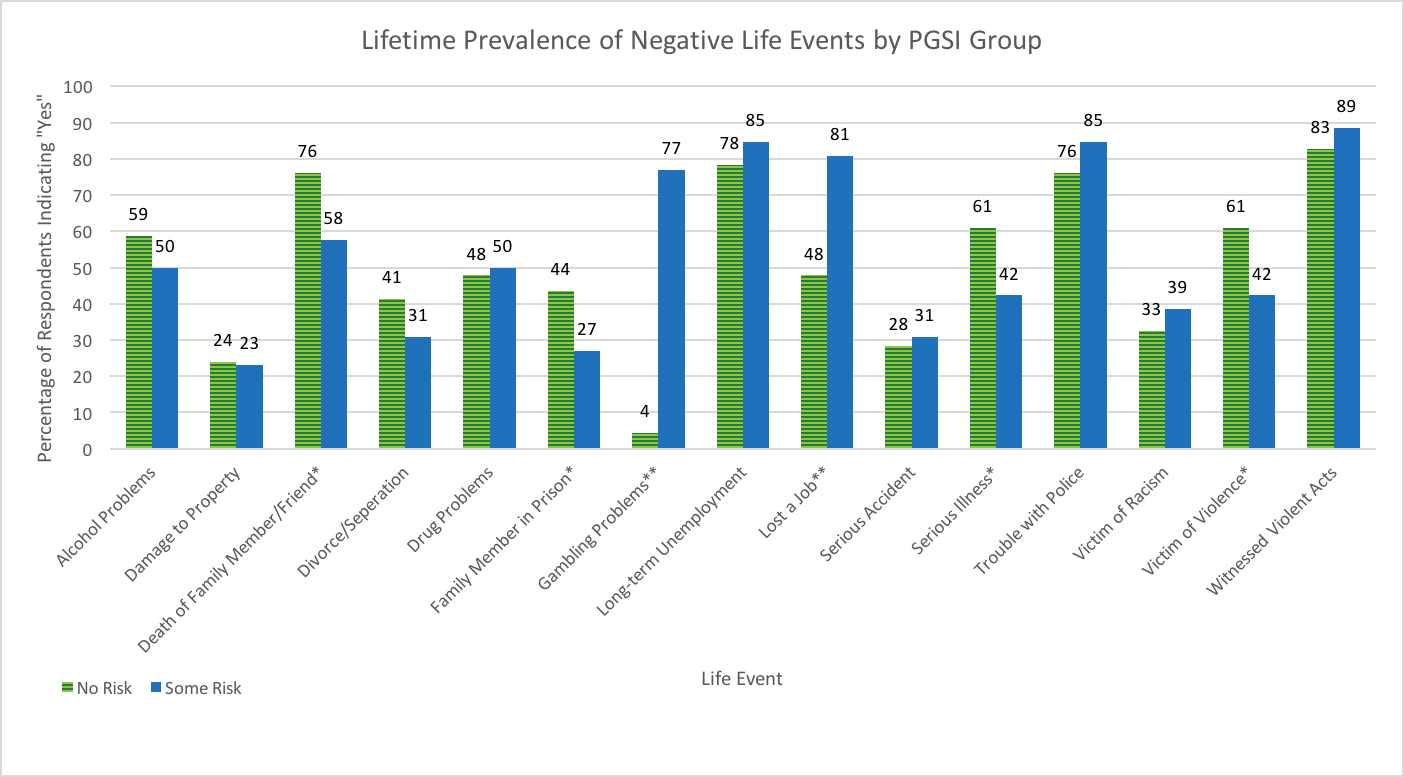The WAGER, Vol. 22(14) – Homelessness or gambling problems: Which comes first?
People experiencing homelessness have significantly higher rates of sub-clinical and disordered gambling-related problems than people in the general population. Many report gambling as a cause for their homelessness. This week, as part of our Special Series on Addiction and Homelessness, the WAGER reviews a study by Steve Sharman and his colleagues that explores how gambling-related problems relate to homelessness.
What is the research question?
How are gambling-related problems related to negative life events, including homelessness? Do gambling-related problems tend to come before or in response to homelessness?
What did the researchers do?
The researchers recruited 72 participants from homeless shelters, day centers, and hostels in London, England.(1) Participants completed the Problem Gambling Severity Index (PGSI). The researchers grouped all participants with PGSI scores greater than zero together in the Some Risk group and remaining participants in the No Risk group (i.e., PGSI score = 0). Participants completed a Negative Life Events Scale to assess the prevalence of negative life events, including gambling-related problems. Options were modified to indicate the temporal relationship between life events and homelessness. The researchers used chi-squared analyses to assess the relationship between PGSI score and negative life events.
What did they find?
Thirty-two participants (44%) endorsed past year gambling, and 26 of those participants endorsed gambling-related problems (36% of the full sample).(2) Sixteen participants–62% of those with gambling-related problems– reported that they experienced gambling-related problems before becoming homeless. With regard to lifetime prevalence of negative life events, the Some Risk group was more likely to report ever experiencing gambling-related problems and significant job loss, but were less likely to report ever experiencing major negative life events (e.g. serious illness, death of a close family or friend) than the No Risk participants. See Figure.
 Figure. This figure represents a comparison between participants who endorsed any level of risk on the PGSI (broken, green bars) and those who experienced no risk (solid, blue bars). Numbers represent the percentage of participants who indicated experiencing each negative life event. Asterisks next to life events represent statistically significant differences between groups. Click image to enlarge.
Figure. This figure represents a comparison between participants who endorsed any level of risk on the PGSI (broken, green bars) and those who experienced no risk (solid, blue bars). Numbers represent the percentage of participants who indicated experiencing each negative life event. Asterisks next to life events represent statistically significant differences between groups. Click image to enlarge.
Why do these findings matter?
Prior to becoming homeless, participants who reported gambling-related problems experienced different negative life events. This finding suggests that people who are homeless and who also experience gambling-related problems might represent a distinct subgroup of individuals within the population of people who are homeless. Programs designed to support populations of people who are homeless might benefit from designing treatment which supports the needs of this unique subgroup.
Every study has limitations. What were the limitations in this study?
It is difficult to make generalizations about the entire population of people experiencing homelessness, especially with such a small sample size. This study relied on self-reports of participants rather than objective observations made by researchers. Self-reports may be inaccurate due incorrect memory recall or an unwillingness to tell the truth.
For more information:
There’s strength in reaching out. In the United States, call or text the National Problem Gambling Helpline at (800) 522-4700 or chat with a counselor online.
— Pat Williams
What do you think? Please use the comment link below to provide feedback on this article.
________________
(1) Participants were eligible to be included in the study if they were sleeping on the streets or in night shelters (i.e. “rough sleeping”), living in hospitals, or other short-term locations.
(2) Nine participants scored as low/moderate risk and 17 scored as problem gamblers.